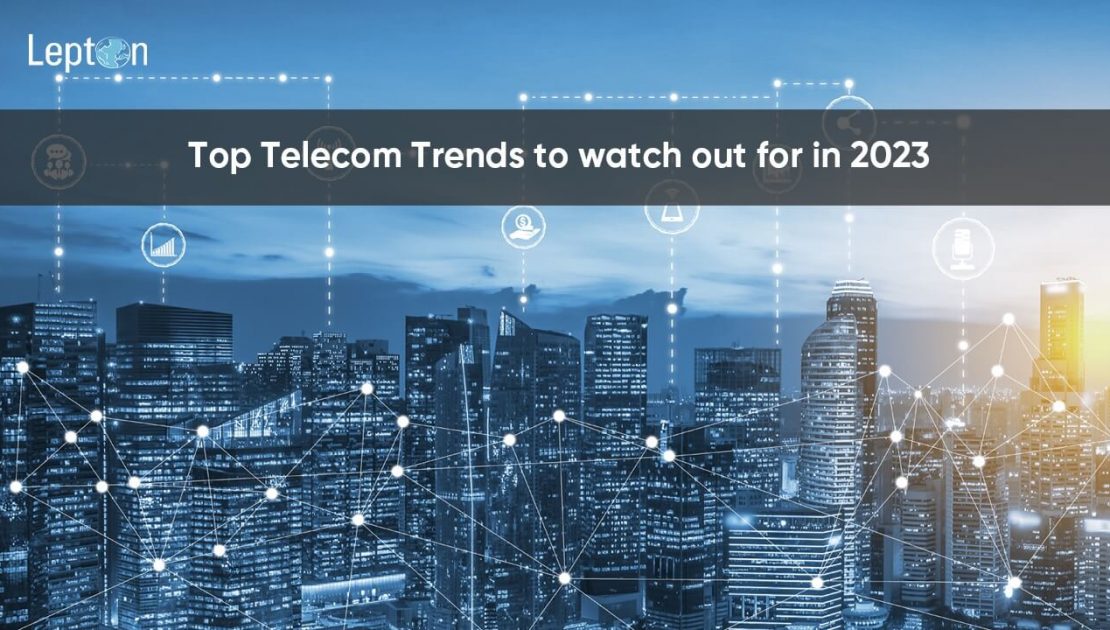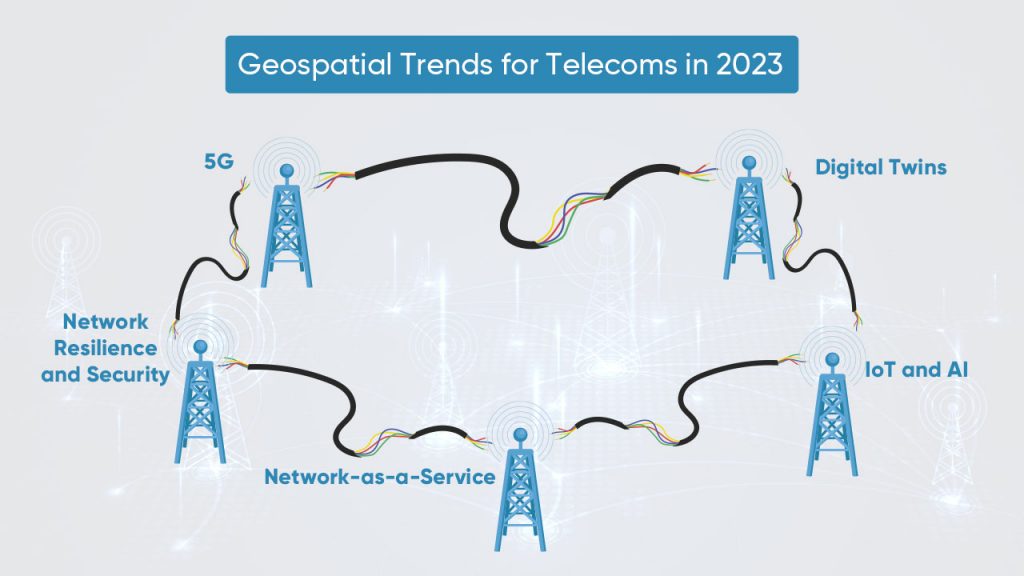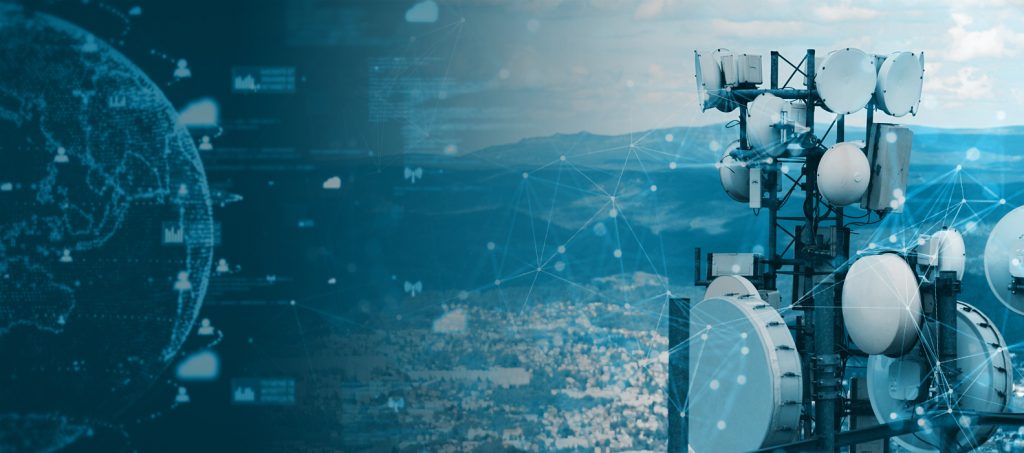Telecommunications as an industry is one of the economy’s most dynamic sectors and the driving force behind many new technologies. It is the source of major technological advancements and innovations.
Although, the following 12 months can be a bumpy ride for many global markets, the telecommunication sector still remains insulated from most of this volatality. This is because the
telecom sector, especially, is witnessing a number of unique technologies and trends that will increasingly be leveraged to create exceptional customer experiences and build network and business resilience.
In 2023, many changes will emerge from the telecommunications industry that will also impact consumers of other sectors worldwide.
Below mentioned trends can set the stage for telecom to be the most dynamic driving force behind other sectors.
- The rise of 5G and innovative 5G monetization practices to enter the first stage of 5G use cases
- Digital twins of the network to guide network operations and boost network performance
- Cloud adoption leads to a Network-as-a-Service model, adding more capabilities to existing network
- The advent of the Internet Of Things (IoT) and Artificial Intelligence (AI)
- The increasing need for cybersecurity and building network resilience
Let’s look at these trends in a bit more detail.
A) 5G: The Next Generation of Wireless Technology
The rise of 5G has been nothing short of meteoric. With its lightning-fast speeds and ultra-low latency, it’s no wonder that it has quickly become the buzzword on everyone’s lips. But as with any new technology, the question of 5G monetization is always at the forefront of discussions.
5G has been here for quite some time, but most of the services offered by telecom service providers are not “pure”; instead, these services are piggybacking on existing 4G LTE infrastructure. Meaning, telecoms are not fully utilizing the potential of 5G.
As service providers take advantage of the increased speed, reliability, and consistency of the 5G network, it will eventually emerge as a “stand-alone” offering. It will be wrong to think that 5G is yet another, much-hyped “same, but faster” technology. It also brings better security and data-carrying capacity, which makes it possible to carry out newer applications like remote surgeries.
B) The Emergence of Digital Twins
In the telecom landscape, a digital twin is a virtual representation of a network, which includes network services and applications. The virtual model of the network is based on multiple sources like subscriber data, edge clouds, IoT devices, and more.
Digital twins aim to help providers manage their network services better by getting a complete view of their network assets on a lightweight, unified, cloud-based platform. They can support CSPs as they adopt and accelerate digital transformation to solve complex 5G consumer and industry-based use cases.
Moreover, this will help CSPs better understand their network. NetworkAccess by Lepton Software is a GIS suite that enables you to create a true digital twin of your network to boost its overall efficiency. This fiber optic network management software looks after end-to-end management of your network and ensures seamless flow of services across multiple locations.
Some use cases for digital twins include:
> Network monitoring
> Network operations and maintenance
> Network planning and design
> Enhance overall customer experience
C) Network–and more–as-a-Service (NaaS)
As per the top five telecom trends of 2022 by Nokia, as-a-service models have boomed in the last year, and many enterprises have grown familiar with the concept of cloud-based subscriptions and platforms like SaaS, PaaS, and more. These models have set up telecoms for rapid growth.
Cloud adoption with the core as Software as a Service is an emerging opportunity for telecoms and enterprises. Beyond 2023, CSPs will evolve from core SaaS to NaaS providers with better connectivity, scalability, context, and data insights to offer to enterprises.
Also Read – The Power of Customer Experience for Telecoms
The current usage of core SaaS will be extended to use location-based resources to meet the needs of future use cases of augmented reality, gamification or automation that require service providers to offer lower-latency, efficient data carrying capabilities and enhanced security and privacy.
D) The Dawn of Internet Of Things (IoT) and Artificial Intelligence (AI)
Internet of Things or IoT is another major trend that telecoms need to keep an eye on, followed by AI.
Building on IoT, the potential of this technology to enable intelligent connectivity among smart devices will push the telecom players to adopt IoT infrastructure to exploit the benefits bestowed by this technology.
The telecom industry is best positioned to deliver and enable IoT infrastructure that will allow these carriers to structure their own IoT offerings. Additionally, the fact that telecom service providers are also the carriers of internet connectivity, implies that they will play an important role in implementing and deploying IoT services.
Moreover, on the other hand, AI too possesses the potential to transform any industry under the sun. From streamlining customer experiences to targeting them based on their digital footprint, it can do it all. AI-based applications such as virtual assistants and chatbots assist telecoms to solve customer service requests more efficiently and effectively help in maintaining and troubleshooting the entire network.
As AI strengthens worldwide, the telecom industry will become a lot more capable to handle customer support and amp up their user experience.
E) Building Network Resilience and Cybersecurity
In 2023 and beyond, when cyberattacks are at a striking high number, network operators need to take all appropriate steps to to secure themselves. Threat to network security can be attributed to three causes:
> Hackers and thieves looking to misuse data
> Corporate espionage
> Lack of awareness among employees
With telecommunication literally being the “backbone” of communication that enables other digital services–from movie streaming to building corporate networks for email collaboration–they are highly prone to cyber attacks. Therefore, telecoms are under extreme pressure to ensure that they are not welcoming hackers by building stronger network resilience.
Walking Towards an Exciting Year for Telecoms
2023 might be the most transformative year for the telecommunication industry, yet. These trends can have the greatest impact on the overall network performance. For telecoms, it’s a year to look forward to focusing on better network planning and design, network data security, improved quality of service, enhanced geo-analytic from accurate location data, customer satisfaction, and definitely newer revenue streams.
Can’t wait to unwrap 2023!
If you wish to elevate your network, contact our experts now.


